UPSC Daily Current Affairs- 10th April 2024 | Current Affairs & Hindu Analysis: Daily, Weekly & Monthly PDF Download
GS-II
Section 451 of Code of Criminal Procedure (CrPC)
Subject: Polity and Governance

Why in News?
The recent Supreme Court ruling emphasized the necessity of first approaching the magistrate under Section 451 of the Code of Criminal Procedure (CrPC) for the release of seized vehicles, rather than directly seeking relief from the High Court under Articles 226/227 of the Constitution.
About Section 451 of CrPC:
- Title of the Section: "Order for Custody and Disposal of Property Pending Trial in Certain Cases"
- Objective: Provision for interim property disposal before case conclusion
- Property Custody: The court can order proper custody of property during inquiry and trial, deciding on sale or disposal based on property nature.
- Inclusion of Property:
- Property or documents produced in court
- Property linked to committed offenses or used for offenses
- Disposal Orders: Court can issue interim orders for property custody and disposal based on property category.
- Nature Consideration: Property condition influences disposal decisions, prioritizing perishable items and retaining trial-relevant properties.
- Disposal Methods: Options include destruction, confiscation, return to claimants, sale, etc.
- Jurisdiction Limit: Court can't order disposal without physical or symbolic property presentation.
- Interim Nature: Section 451 orders are provisional and subject to revision as circumstances demand.
Source: Live Law
What's the reason for the latest trade conflict between the US and China?
Subject: International Relations

Why in News?
China's rapid growth in electric vehicle and green technology production has sparked a new trade dispute between the US and China.
- US Treasury Secretary Janet Yellen highlighted this issue during her recent visit to China.
Background Information:
- China has developed a significant car industry, responsible for 60% of global electric vehicle sales.
- China leads in industries like solar panels, batteries, and steel, being the world's largest solar cell producer.
- There are concerns about China's surplus production capacity and its need to find markets outside the country if domestic demand doesn't rise.
US-China Trade Dispute:
- The conflict escalated when Trump imposed heavy tariffs on Chinese steel and aluminum imports, leading to retaliatory tariffs from China.
- This trade tension contributed to a weakened global economy, as noted by the IMF.
US-China Trade and Investment Facts:
- Total trade between the US and China in goods and services reached $737.1 billion in 2018, with a significant trade deficit for the US.
- China is the largest goods trading partner of the US, with trade totaling $659.8 billion in 2018.
- Both countries have substantial foreign direct investment in each other, with the US leading in manufacturing and China in various sectors like real estate.
How does China's Auto Industry threaten the Indian Market?
- Market Dominance: China's dominance in the local market poses a threat to India's traditional export markets, impacting initiatives like 'Make in India'.
- Quality Concerns: Safety concerns arise due to the quality of auto parts from China, making it challenging for Indian vehicle safety.
- Cost Advantage: Chinese automakers have a cost advantage over Western brands, especially in producing electric vehicles efficiently.
- Security Concerns: There are worries about Chinese vehicles being used for espionage or sabotage in foreign markets.
How can India benefit from the US-China trade conflict?
- Export Opportunities: India can explore export markets in the US and China, focusing on sectors like garments, agriculture, automobile, and machinery.
- Export Growth: India witnessed a significant increase in exports to both the US and China in 2018, indicating potential for further growth.
- Product Opportunities: India can expand exports of various products to both countries, helping in trade balance improvements.
- Trade Deficit Reduction: Enhanced exports can aid India in reducing the trade deficit with China, creating a more balanced trade relationship.
Conclusion:
- The trade conflict between the US and China is primarily fueled by China's advancements in green technology, especially electric vehicles.
- India has the opportunity to boost exports to both countries, potentially reducing its trade deficit with China and accessing new markets.
Source: Economic Times
IPEF Clean Economy Investor Forum
Subject: International Relations
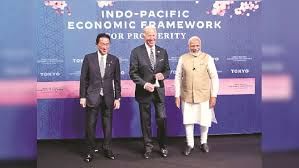
Why in News?
The Indo-Pacific Economic Framework for Prosperity (IPEF) Clean Economy Investor Forum is scheduled to take place in Singapore.
About IPEF Clean Economy Investor Forum
- The Forum brings together top investors, philanthropies, financial institutions, companies, start-ups, and entrepreneurs in the region.
- It aims to attract investments into sustainable infrastructure, climate technology, and renewable energy projects.
- Managed by Invest India, India's National Investment Promotion Agency.
- The Department of Commerce is the nodal agency for IPEF engagements.
Opportunities at the Forum
- Climate Tech Track: Recognizes top climate tech companies and start-ups among member countries for presentation to global investors.
- Infrastructure Track: Showcases investible sustainable infrastructure projects in areas like energy transition, transport, logistics, and waste management.
About Indo-Pacific Economic Framework for Prosperity (IPEF)
- Initiated by the US to enhance economic partnerships in the Indo-Pacific region, focusing on resilience, sustainability, and competitiveness.
- Launched in 2021 with 12 partners representing 40% of the world GDP.
Four Main Pillars of IPEF
- Trade: Includes digital economy, labor commitments, environment, trade facilitation, and corporate accountability.
- Supply Chain Resilience: Aims to develop a unique supply chain agreement to prevent disruptions.
- Clean Energy and Decarbonization: Focuses on renewable energy targets, carbon removal, energy efficiency, and combating methane emissions.
- Fair Economy Agreement: Commits to effective tax, anti-money laundering, and anti-bribery schemes.
Member Countries
- Includes India and 13 other countries in the Pacific Ocean such as Australia, Japan, Malaysia, and the United States.
Distinguishing Features of IPEF
- No specific market access or tariff reductions outlined.
- Not a rigid take-it-or-leave-it arrangement like traditional trade pacts.
- Members are not obligated by all four pillars despite being signatories.
Source: Business Standard
Cantonment Boards
Subject: Polity and Governance

Why in News?
The central government has taken steps to reduce the land jurisdiction of 10 major cantonment boards across five states. In May 2023, a plan was initiated to abolish all 62 colonial-era Cantonments nationwide.
Understanding Cantonments
- Cantonments are permanent military stations where groups of military personnel are stationed for administrative purposes.
- Regulated by the Cantonments Act of 2006, these areas are governed for municipal administration and control.
- India currently houses 62 cantonments spread across states, known for varying infrastructure and facilities.
Cantonment Boards
- Cantonment Boards are democratic bodies with elected and nominated members.
- The Station Commander of the Cantonment acts as the ex-officio President of the Board.
Historical Context
- The Cantonments Act of 1924 was introduced by the British to oversee municipal administration.
- Post-independence, the Act was amended to align with India's democratic structure.
- The current Cantonments Act of 2006 replaced the earlier version, emphasizing autonomy and accountability for Cantonment Boards.
Classification of Cantonments
- Category I: Cantonments with a population exceeding 50,000.
- Category II: Cantonments with populations ranging from 10,000 to 50,000.
- Category III: Cantonments with populations below 10,000.
- Category IV: Industrial or training Cantonments, regardless of population size.
Proposed Changes by the Central Government
- Conversion to Exclusive Military Stations: Military areas within all cantonments will be designated as exclusive military stations, under absolute Army control.
- Integration with Local Municipalities: Civilian areas in cantonments will merge with local municipalities for maintenance and essential services.
- Shift from Traditional Cantonment Concept: Post-independence, the Indian Army transitioned away from traditional cantonments due to military-civilian conflicts.
Source: Times of India
GS-III
Coordinated Lunar Time (LTC)
Subject: Science and Technology
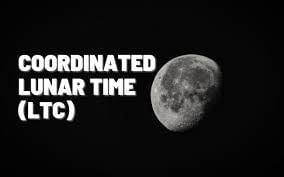
Why in News?
Recently, the US White House instructed NASA to establish a time standard for the Moon.
- The purpose is to facilitate coordination among international entities and private companies operating on the lunar surface.
Significance of Coordinated Lunar Time (LTC)
- It serves as a timekeeping reference for lunar spacecraft and satellites requiring precise timing for their missions.
- Enables synchronization of communication between satellites, astronauts, lunar bases, and Earth.
- Essential for coordinating operations, ensuring transaction reliability, and managing lunar commerce logistics.
Need for Coordinated Lunar Time
- Due to lower gravity on the Moon, time moves slightly faster compared to Earth.
- For example, an Earth-based clock on the Moon would lose an average of 58.7 microseconds per Earth day.
- Such discrepancies can impact spacecraft docking, data transfer timing, communication, and navigation.
Functioning of Earth's Time Standard
- Coordinated Universal Time (UTC) serves as the basis for most world clocks and time zones.
- UTC is established by the International Bureau of Weights and Measures in Paris, France.
- It is maintained through a network of over 400 atomic clocks worldwide, which measure time based on atomic frequencies.
- Atomic time is highly accurate, with a second defined by the vibrations of atoms like cesium-133.
- Countries adjust their local time relative to UTC based on their position east or west of the Greenwich meridian.
Source: Times of India
Rhamphicarpa fistulosa
Subject: Agriculture
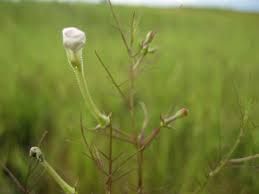
Why in News?
A recent report highlighted the impact of rice vampireweed (Rhamphicarpa fistulosa) in Africa, affecting over 140,000 farm households and causing annual losses of approximately $82 million to the continent's economy.
About Rhamphicarpa fistulosa:
- Rhamphicarpa fistulosa is a facultative, parasitic weed that primarily grows on rice, earning it the nickname "rice vampireweed."
- It also poses a threat to sorghum, maize, and potentially other cereal crops.
- The weed can sprout and develop independently but experiences a significant boost in reproductive output when parasitizing a suitable host.
- Unlike many weeds, Rhamphicarpa fistulosa is not effectively controlled by fertilizers.
- It is prevalent in at least 35 African countries, with 28 of these nations hosting rainfed lowland rice regions.
- The countries most severely affected by this weed include Gambia, Senegal, Burkina Faso, Togo, and to a lesser extent, Mauritania, Guinea-Bissau, Benin, Malawi, and Tanzania.
Understanding Parasitic Plants:
- Parasitic plants rely on other plants for some or all of their nutrients. They establish a xylem-to-xylem connection with the host plant using a specialized organ known as a haustorium.
- Through this connection, the parasite siphons water, nutrients, and metabolites from the host plant, disrupting its growth processes and reducing its reproductive output.
Types of Parasitic Plants:
- Obligate Parasite (Holoparasite): An organism that cannot complete its life cycle without a host. It relies on the host for reproduction and survival.
- Facultative Parasite: A parasite capable of completing its life cycle with or without a host. It can live independently or in association with a host, unlike an obligate parasite.
Source: DTE
Import Restrictions on Solar PV Cells
Subject: Science and Technology
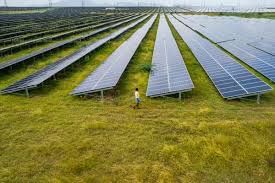
Why in News?
The Finance Minister introduced a PLI scheme in the Union Budget of 2022-23 to enhance domestic manufacturing of the entire solar supply chain from polysilicon to solar modules.
- India imposed a 40% customs duty on PV modules and a 25% duty on PV cells to discourage imports.
Approved List of Models and Manufacturers (ALMM)
- The ALMM is a list approved by the Ministry of New and Renewable Energy (MNRE) in India, ensuring the quality and reliability of solar panels and manufacturers.
- It is utilized for government projects, government-assisted projects, schemes, open access, and net-metering projects, aiming to promote domestic solar manufacturing against China's dominance.
China's Dominance in Solar PV Imports
- China is the primary supplier of solar cells and modules to India, accounting for a significant share of imports.
- China's manufacturing capacity in components like polysilicon, wafers, cells, and modules far exceeds that of other countries.
- Efforts such as the ALMM order and the PLI scheme have been initiated by the government to reduce dependency on imports.
- Customs duties on PV modules and cells have been imposed to further incentivize domestic manufacturing.
Reasons for China's Leading Export Position
- China's cost-competitive manufacturing, low power costs, growing domestic demand, economies of scale, government support, and continuous innovation contribute to its export dominance.
Future Prospects for Solar Energy in India
- India aims to achieve 500 GW of non-fossil fuel capacity by 2030, emphasizing the role of solar energy.
- With rapid electricity demand growth, abundant solar potential, and initiatives like the ALMM list and PLI scheme, solar energy is crucial for India's energy transition.
Source: The Hindu
POEM-3: ISRO's 'Zero Orbital Debris' Milestone
Subject: Science and Technology
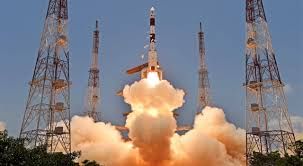
Why in News?
The Indian Space Research Organisation (ISRO) has announced the success of its PSLV-C58/XPoSat mission in significantly reducing debris in Earth's orbit.
About PSLV Orbital Experimental Module-3 (POEM-3)
- Launched on January 1, 2024, POEM-3 repurposed the spent PS4 stage of the PSLV-C58 vehicle, which was initially used for the XPoSat mission.
- It functions as a controlled platform in three axes at varying altitudes, equipped with power generation, tele-command, telemetry capabilities to support various Payloads.
- The XPoSat mission's primary objective was to eliminate debris in space, showcasing ISRO's dedication to responsible space endeavors.
- Following deployment into a 650 km orbit, POEM-3 was adjusted to a 350 km circular orbit to minimize orbit decay post-experiment.
- After completing 400 orbits, POEM-3 safely re-entered Earth's atmosphere after spending 73 days in space.
Significance of this achievement
- The increase in satellites orbiting Earth has raised concerns about space debris, necessitating proactive measures.
- Space debris in low Earth orbit (LEO) includes remnants of spacecraft, rockets, defunct satellites, and fragments resulting from explosive deterioration or anti-satellite missile tests.
- These debris pieces travel at speeds up to 27,000 kilometers per hour, posing risks to various space assets due to their sheer volume and momentum.
Threats posed by Space Debris
Space debris presents two primary risks:
1. Creation of unusable orbit regions: Excessive debris can render certain orbit regions unusable.
2. Kessler Syndrome: This phenomenon involves the generation of additional debris through cascading collisions initiated by an initial impact.
Source: India Today
|
55 videos|5389 docs|1141 tests
|
FAQs on UPSC Daily Current Affairs- 10th April 2024 - Current Affairs & Hindu Analysis: Daily, Weekly & Monthly
| 1. What is the significance of Section 451 of the Code of Criminal Procedure (CrPC)? |  |
| 2. What are the key reasons for the latest trade conflict between the US and China? |  |
| 3. What is the IPEF Clean Economy Investor Forum and its significance? |  |
| 4. What are Cantonment Boards and their role in governance? |  |
| 5. What is the concept of Coordinated Lunar Time (LTC) and its implications? |  |
















